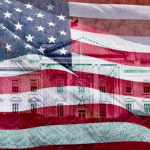Callable certificates of deposit promise higher returns than regular CDs and are FDIC-insured. But the issuer owns a call option on the CD and can redeem, or “call,” your CD from you for the total amount before it matures.
Like a regular CD, a callable CD is a certificate of deposit paying a fixed interest rate over its lifetime. But read the fine print before you turn your money over to the bank or brokerage firm. Otherwise, you might end up disappointed and shopping again for one of a more traditional CD.
Key Takeaways
- A callable certificate of deposit is a CD that contains a call feature where the CD can be redeemed (called away) early by the issuing bank.
- The callable period is usually set within a given time frame and at a preset call price.
- Because of the risk to investors that these are called in early, they generally pay a higher interest rate than traditional CDs.
- The higher interest rate may lure savers in, but read the fine print. Being called in early raises re-investment risk.
What Is a Callable Date?
A callable date is when the issuer can call your certificate of deposit. Let’s say, for example, that the call date is six months. This means that six months after you buy a CD, the bank can decide whether it wants to take back your CD and return your money with interest. The bank will have that option again every six months after the call date.
A change in prevailing interest rates is the main reason the bank or brokerage firm will recall your CD on the callable date. The bank will ask itself if it’s getting the best deal possible based on the current interest rate environment.

Investopedia / Michela Buttignol
What Is a Maturity Date?
The maturity date represents how long the issuer can keep your money. The farther in the future the maturity date is, the higher the interest rate you should expect to receive.
Don’t confuse the maturity date with the call date. For instance, a two-year callable CD does not necessarily mature in two years.
The “two years” refers to the time period you have before the bank can call the CD away from you. The actual amount of time you must commit your money could be much longer. It’s common to find callable CDs with maturities ranging from 10 to 20 years.
When Interest Rates Decline
If interest rates fall, the issuer can borrow money for less than it’s paying you. This means the bank will likely call back the CD. You’ll be forced to find a new vehicle to invest in.
For example, suppose you have a $10,000 one-year callable CD paying 5% with a five-year maturity. As the one-year call date approaches, interest rates drop to four percent. The bank has lowered its CD rates too, paying only four percent on its newly issued one-year callable CDs.
Your bank asks: “Why should I pay you five percent when I can borrow the same $10,000 for four percent? Here’s your principal back, plus any interest we owe you. Thank you very much for your business.”
Perhaps you were counting on the $500 per year interest ($10,000 x 5% = $500) to help pay for your annual vacation. Now you’re stuck with just $400 ($10,000 x 4% = $400) if you buy another one-year callable CD.
What do you do with the $10,000 now? You’ve run into the problem of reinvestment risk.
Note
You can also find a place to put your money that pays 5%, such as by purchasing a corporate bond. But that might involve more risk than you wanted for this $10,000. Speak with an investment advisor to learn more about your options.
When Interest Rates Rise
Your bank probably won’t call your CD if prevailing interest rates increase. Why would it? It would cost more to borrow elsewhere.
Returning to our earlier example, let’s look at your $10,000 one-year callable CD again. It’s paying you 5%, but prevailing rates have jumped to 6% by the time the callable date hits. You’ll continue earning $500 per year, even though newly issued callable CDs earn more. But what if you’d like to get your money out and reinvest at the new, higher rates?
Surrender Charges
If you want to withdraw your money before the maturity date, you may encounter surrender charges. These fees cover the maintenance costs of the CD and are intended to discourage you from doing early withdrawal of your principal.
As a result, you could get stuck with a lower rate. If rates continue to climb while you own the callable CD, the bank will probably keep your money until the CD matures.
You won’t always have to pay these fees—if you have held the certificate for a long enough period, they will often be waived.
Check the Issuer for FDIC Coverage Limits
Each bank or thrift institution depositor is limited to $250,000 in FDIC insurance. There is a potential problem if your broker invests your CD money with an institution where you have other FDIC-insured accounts. If the total is more than $250,000, you run the risk of exceeding your FDIC coverage.
Frequently Asked Questions (FAQs)
Who Can Sell CDs?
Anyone can be a deposit broker to sell CDs. There are no licensing or certification requirements. This means you should always check with your state’s securities regulator to see whether your broker or your broker’s company has any history of complaints or fraud.
Are Callable CDs Worth It?
Every investment decision depends on your unique financial situation and needs. Callable CDs may offer better, higher interest rates compared to non-callable CDs. However, you might lose that great rate if the institution redeems your CD early. Callable CDs have unique considerations that might not be right for all investors, particularly if you want the security of a certain return. Instead, you might want to look for a CD to lock in your rate until 2026 to 2029.
What Are the Drawbacks of Callable CDs?
Callable CDs have three drawbacks. First, the issuer calls your CD, and you don’t earn as much as was possible if your CD were held until maturity. Second, your CD isn’t called, and you’re forced to hold it until it matures despite higher rates elsewhere (due to changes in the federal funds rate). Third, due to a declining interest rate environment, you missed the chance to find a CD yield as high as when opening the callable CD.
The Bottom Line
Ultimately, callable CDs shift the interest-rate risk to you, the investor. Because you’re taking on this risk, you’ll tend to receive a higher return than you’d find with a traditional CD with a similar maturity date.
Before you invest, you should compare the rates of the two products. Then, think about which direction you think interest rates are headed in the future. If you have concerns about reinvestment risk and prefer simplicity, callable CDs probably aren’t for you.
Read the original article on Investopedia.


